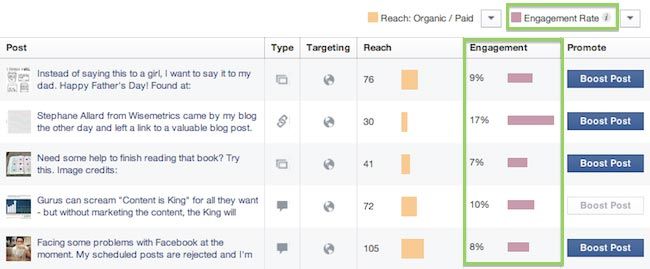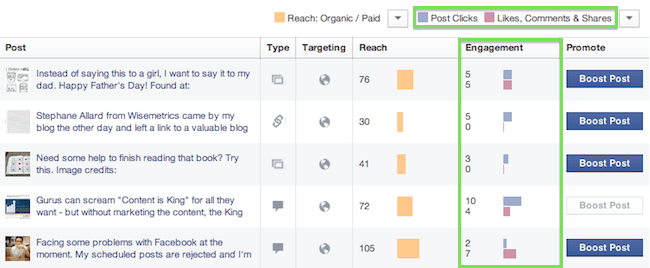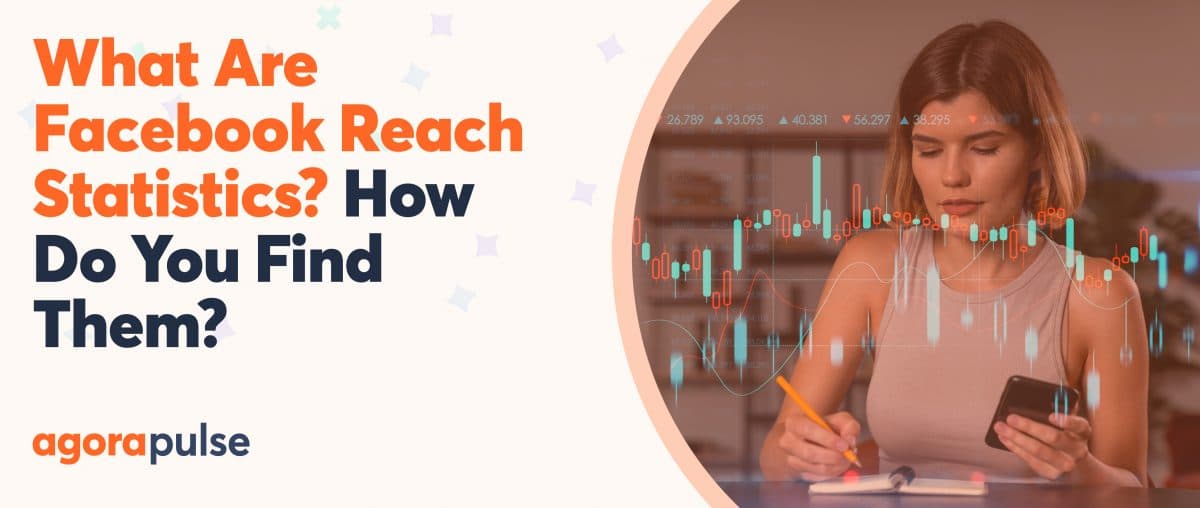This is the third installment in a series of posts that I’m writing with Agorapulse to explain the various post-level Facebook metrics. You can find the previous articles here:
-
- o
- Reach
o
Today, I’ll touch on the much coveted metric: Lifetime Engaged Users (Column N).
When I look at this metric, it seems very straightforward and there is nothing much I need to explain. But I see a slight complication because of the way Facebook defines a related metric (You guessed it): Lifetime Post Consumers
So what is wrong with Facebook’s definitions? Let’s take a look.
Lifetime: The number of people who clicked anywhere in your posts. (Unique Users)
Lifetime: The number of people who clicked anywhere in your post. Clicks generating stories are included in “Other Clicks.” (Unique Users)
Uh…
It’s alright. Let’s take it slow.
To understand when someone is considered an engaged user, I look at what actions taken are considered engagement in the eyes of Facebook.
So I’m going to bring you to Facebook web Insights to search for some hints of what engagement really is.
While fiddling around with Facebook web Insights, one particular metric, “Engagement Rate”, caught my eyes.
Surely, this sounds like something that most business owners and marketers would conveniently use.
But I am often wary of what Facebook reports, in case they are either vanity metrics or metrics that aren’t what I think they mean.
So I decided to do some calculations to check how Facebook derived these numbers. After some calculations, I found that you can obtain this metric by dividing Lifetime Engaged Users (Column N) by Lifetime Post Total Reach (Column H).
This is fine by me, since it is calculated in the same manner as how Facebook marketers interpret it.
In fact, this is how Facebook defines “Engagement Rate”.
But that still does not answer our earlier question: what is engagement?
What Engagement Is
I have delayed going into this topic for as long as I could, because for over a year, experts have been scratching their heads over two similar sounding metrics that Facebook provided: Consumers and Engaged Users.
Sometime last year, both Jon Loomer and Ben Donkor gave very insightful perspectives to how they interpreted both metrics.
However, as I have repeatedly mentioned these days, Facebook has streamlined its exported Insights, while several metrics and tabs have been replaced. In fact, the gap between Lifetime Engaged Users and Lifetime Post Consumers have narrowed (more on this later).
In any case, Facebook web Insights gives us some hints to what “Engagement” includes.
First, it includes the number of clicks as well as number of stories created.
In other words, when you click on a post, whether to view a photo, watch a video, or “other clicks” such as clicking on “see more”, you are considered as an engaged user. These actions are mere clicks and do not create stories.
Next, if you click on “like”, “comment”, or “share” in a post, you are also regarded as an engaged user. These are also the actions that create stories.
But committing all the actions above also mean that you are a post consumer, so what the heck is the difference?
As Ben Donkor pointed out, there is no exact science to the way we can determine what exactly Facebook recognises as engagement. However, we know for sure that it includes the following common actions not included in post consumption or consumer:
-
- o
- Liking a comment
o
- Liking a reply to a comment
In other words, Facebook is very general about the way it defines Post Engagement and Consumers, without actually explaining to you what “post clicks” and “stories” comprise in each case. The devil is in the details.
What about replies to comments?
If you followed Ben’s article, you would have seen that Facebook does not regard replies to comments under post consumption.
But that has changed, as I highlighted in my earlier post about post consumption metrics. This is also precisely the reason why I said that the gap between both metrics has narrowed, and I believe that in due course, Facebook will phase one of these two metrics out, while keeping them both in the Page-level Facebook data.
More on “Post Engagement” and “Post Consumption” at the Page-level another day.







